Welcome to the bountiful and colorful world of geraniums! These beloved plants, with their eye-catching blossoms and lush foliage, have been a mainstay in gardens worldwide for what seems to be forever. Known for their resilience and versatility, geraniums can uplift any sunny garden space, patio, or deck. This guide will walk you through every step of geranium care, ensuring that your plants remain healthy and showy throughout the year.
Understanding the different types of geraniums can help you choose the right variety for your garden's needs. Here are some of the most popular types:
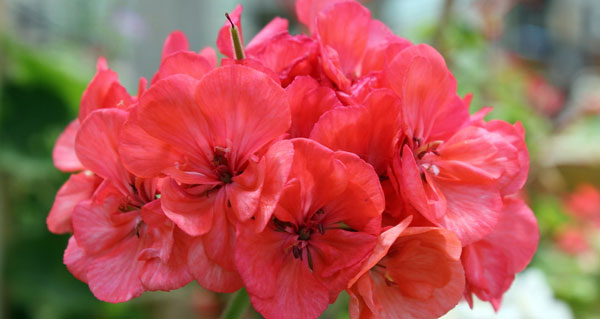
Zonal Geraniums (Pelargonium x hortorum):
- Description: Named for the 'zone' of color in their leaves, these are the most commonly grown geraniums.
- Characteristics: They feature velvety, rounded leaves and upright flower clusters in a range of colors from white to deep red.
- Ideal Use: Perfect for container gardening and window boxes due to their bushy and compact growth habit.
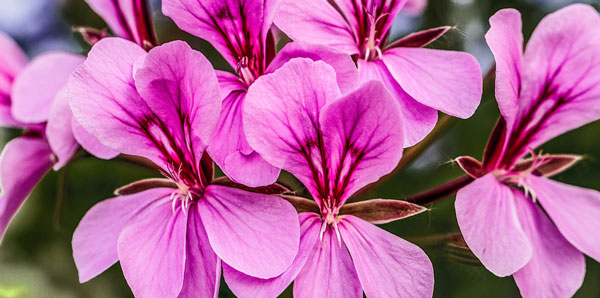
Ivy Geraniums (Pelargonium peltatum):
- Description: Ivy geraniums are known for their trailing habit and ivy-shaped leaves.
- Characteristics: They produce single or double flowers and are excellent for hanging baskets or as a ground cover.
- Ideal Use: Ideal for creating a cascading effect in hanging baskets or spilling over the edges of containers or retaining walls.

Scented Geraniums (Pelargonium spp.):
- Description: These geraniums are grown primarily for their fragrant leaves, which come in a variety of scents including lemon, rose, mint, and apple.
- Characteristics: The flowers are usually more subtle compared to other types, but the aromatic foliage makes them a garden favorite.
- Ideal Use: Great for sensory gardens, borders, or as aromatic additions to patios and indoor spaces.

Regal or Martha Washington Geraniums (Pelargonium x domesticum):
- Description: Known for their regal appearance, these geraniums have large, richly colored blooms.
- Characteristics: They have a more upright and bushy growth and bloom primarily in late spring to early summer.
- Ideal Use: Best suited for cool-season flowering, making them great for spring gardens or as indoor houseplants.
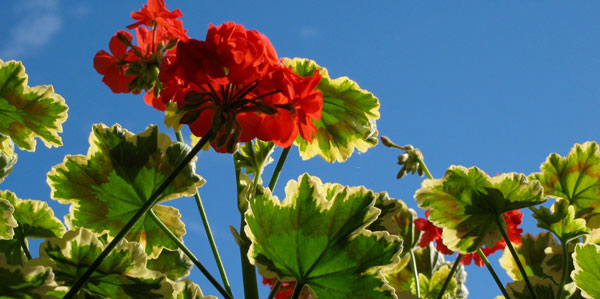
Fancy-Leaf Geraniums:
- Description: These geraniums are prized for their variegated or patterned foliage.
- Characteristics: The leaves may have streaks, zones, or margins of contrasting colors, with the blossoms being slightly less prominent.
- Ideal Use: Perfect for adding interesting foliage patterns in mixed flower beds or containers.
Basic Geranium Care:
- Sunlight: Geraniums thrive in well-lit environments, needing at least five hours of sunlight daily, though they perform best in full sunlight.
- Watering: Geraniums are drought-tolerant and prefer not to have "wet feet," meaning overwatering can be detrimental, causing the roots to rot. A key to successful geranium care is balancing moisture – watering should be consistent but not excessive. The soil should be allowed to dry out slightly between waterings. You should only have to water 2 or 3 times per week, depending upon the ambient temperature and humidity where you live.
- Feeding: Geraniums flourish on a nutrient-rich diet. Use a balanced plant food with equal parts nitrogen, phosphorus, and potassium; we recommend using a water-soluble fertilizer with a 10-10-10 NPK rating. During the growing season, feed them regularly – twice a week is ideal. Remember, pelargoniums are hearty eaters, and regular feeding will result in more robust flowering and plant growth.
- Pruning: Geraniums do best with the regular removal of dead flowers and leaves. This is essential to encourage new growth and prevent disease. Remove any leaves that look like they are going downhill. When removing sad looking leaves, snap them off where the leaf stem attaches to the main stem. Clean up any leaves that drop onto the potting soil as well. Removing spent flowers should be done in the same way. Snap or cut the dying flower off where it meets the stem. Checking for dying leaves and blossoms at least once per week will promote denser foliage and more numerous flowers, ensuring your plants will look their best all summer long.
Tackling Pests, Diseases, and Other Geranium Issues:
- Yellowing leaves: This usually indicates overwatering. Adjust your watering schedule, letting the soil dry slightly between waterings and ensure good drainage.
- Rust: This is the most common fungal issue, requiring the removal of all affected leaves and application of an organic fungicide. Bonide Liquid Copper Fungicide, or a similar product, should solve the problem.
- Caterpillars: While caterpillars are not common in some growing zones, if you spot one, it should be removed manually to avoid the unsightly “munch marks” on the foliage of your geraniums.
- Lack of flowers: If your geraniums aren't flowering, they may need more nutrients or more sunshine. Regular feeding with a 10-10-10 NPK plant food and adequate sunlight will ensure the prettiest and fullest plants.
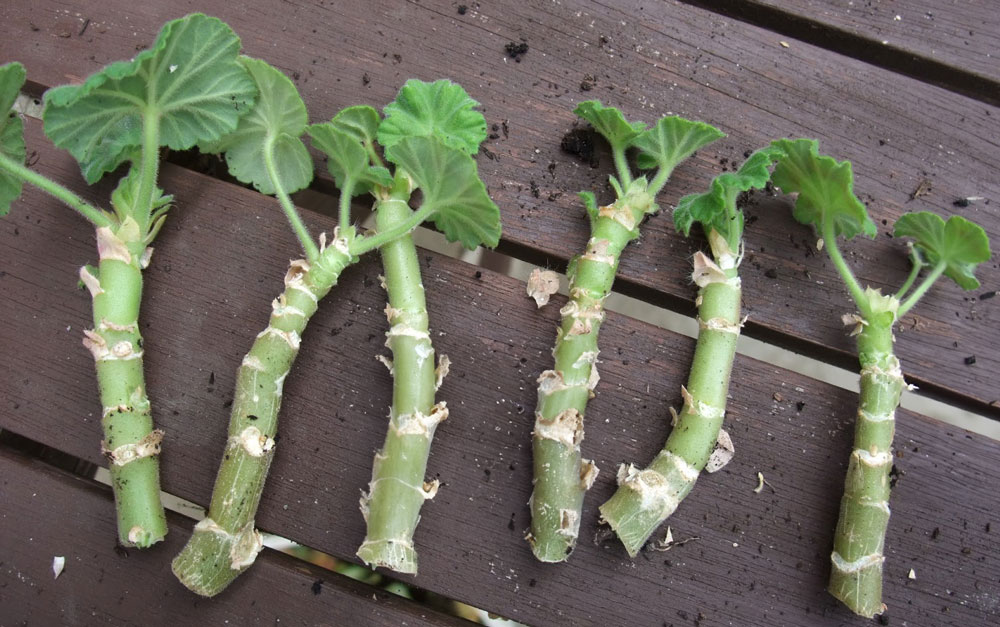
Propagating Geraniums From Cuttings:
The best time to take cuttings is when the plant is in active growth, using a sharp knife to ensure a clean cut. Choose a branch that's healthy and strong. The cutting should be about 4-6 inches long, with the lower leaves removed. While rooting hormones are most commonly used, an alternative is a Vitamin C solution, diluting Vitamin C powder in water, which has shown to be effective in promoting root growth. Place the cuttings in a pot with adequate drainage and a quality potting soil. Keep the soil moist, but not wet. Sitting your potted cuttings on a heating pad with consistent warmth will encourage quicker root growth. Following this method should result in well rooted cuttings in 2-3 weeks.
Overwintering Geraniums:
As geraniums are sensitive to frost, winter preparation is crucial to keep them alive until the following spring.
- Reduce Watering: Start reducing watering to just once per week, 2 or 3 weeks before the first expected frost. This will ease the transition from the ground or container to winter storage.
- Clean the Roots: When digging up the plants, handle the roots gently and shake off all soil. Running the roots under a medium stream of room-temperature water will complete the cleaning process. Blot them with a paper towel to dry the roots.
- Remove Leaves and Blossoms: Next, remove all leaves and flowers until you only have stems left, using a sharp knife or scissors. Cut back any part of the stems that may look damaged or unhealthy. Make sure there are no insects remaining on the plants.
- Storage: There are several storage methods, but our favorite is to place them in a paper bag with another paper bag placed down over the top to completely, loosely cover the plants. It is essential that they do not receive any light while being stored. They should also be kept in a cooler place away from any heat sources.
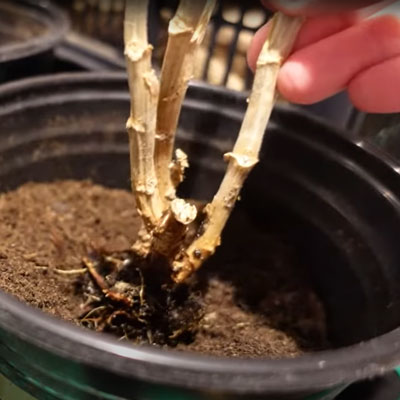
When you are ready to repot them in the spring, simply place the rooted ends into pots, wet the soil, and place in the sun. When reintroducing the plant to light and warmth, it may initially grow white due to lack of chlorophyll but will soon recover its green color as sunlight encourages chlorophyll production.
As you propagate new plants, overwinter your favorites, and watch them bloom season after season, you'll find that your geranium adventures are endlessly rewarding. We hope this guide serves as your go-to resource for all things geranium and inspires you to continue exploring the endless possibilities these plants offer. May your garden be a testament to the beauty and resilience of geraniums, as they flourish under your care and are a continual source of joy and pride.
































































































































































































































































































































































































































































































































































































































































